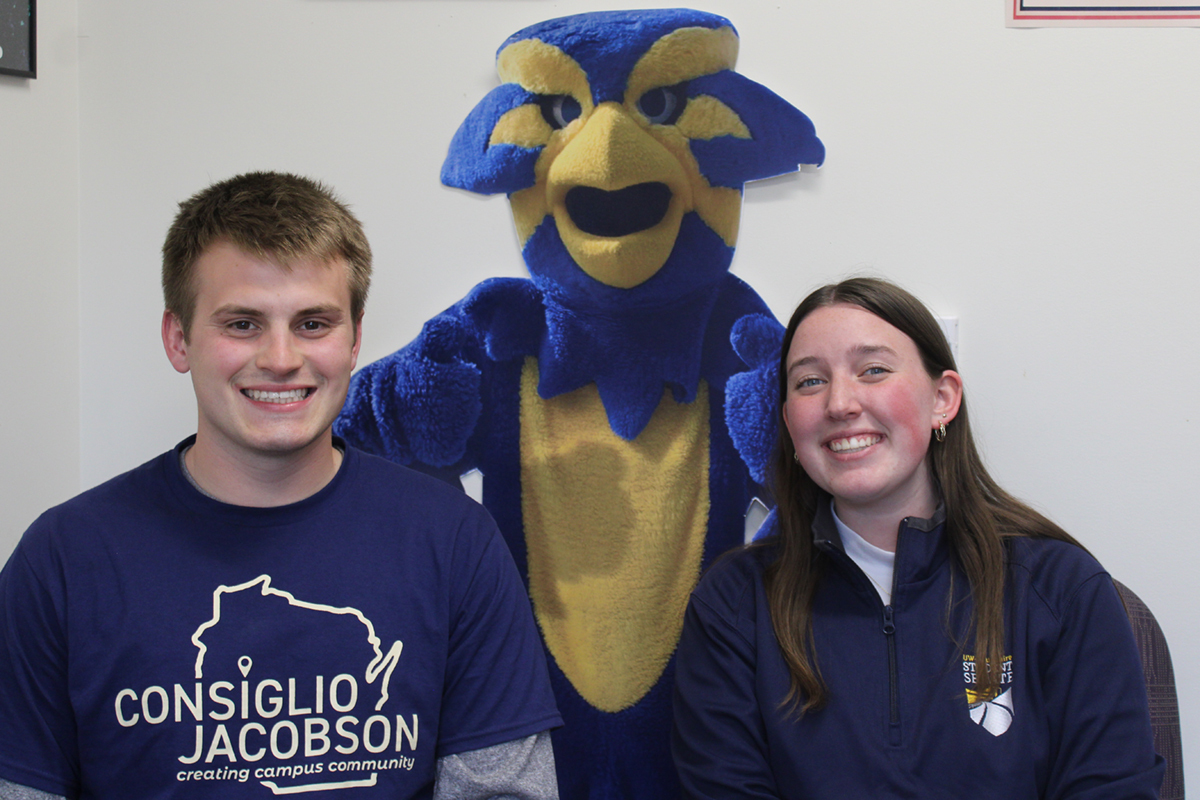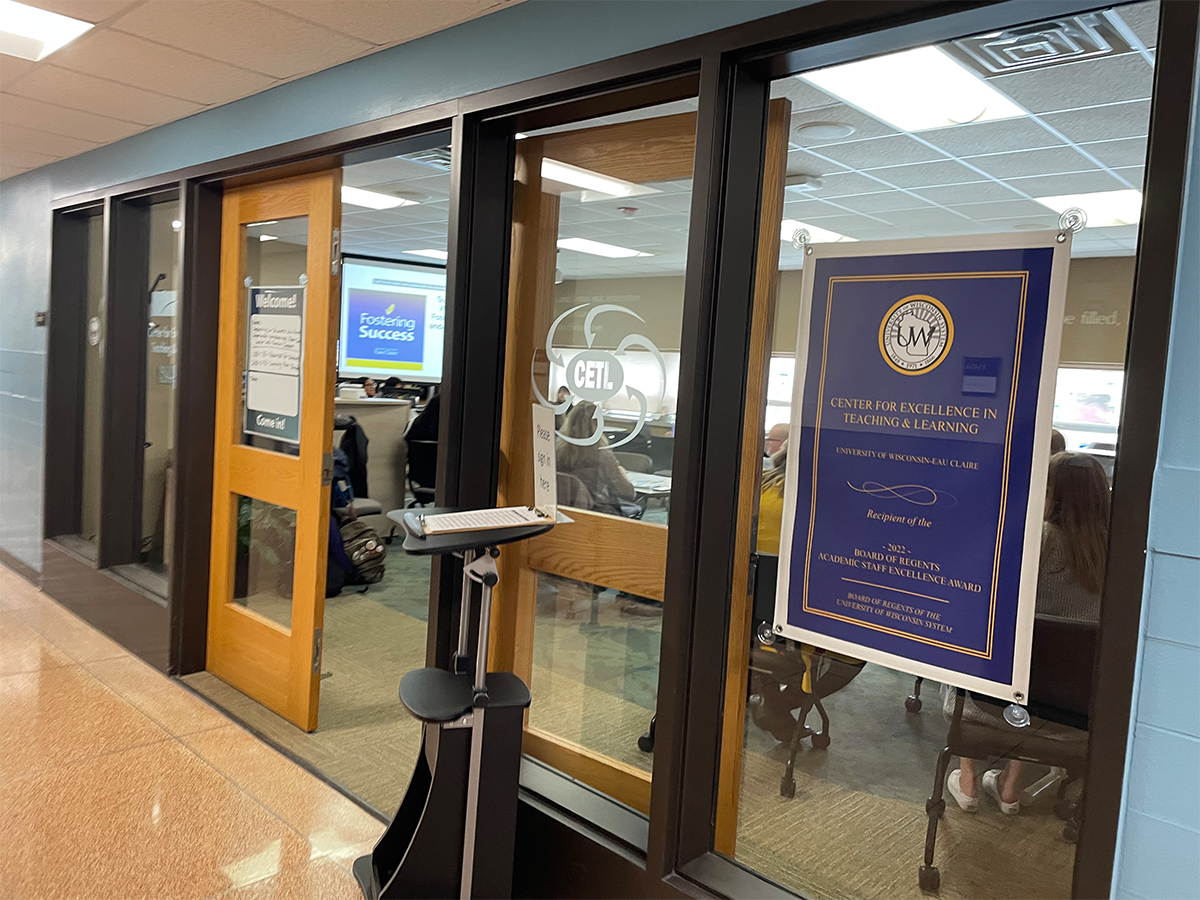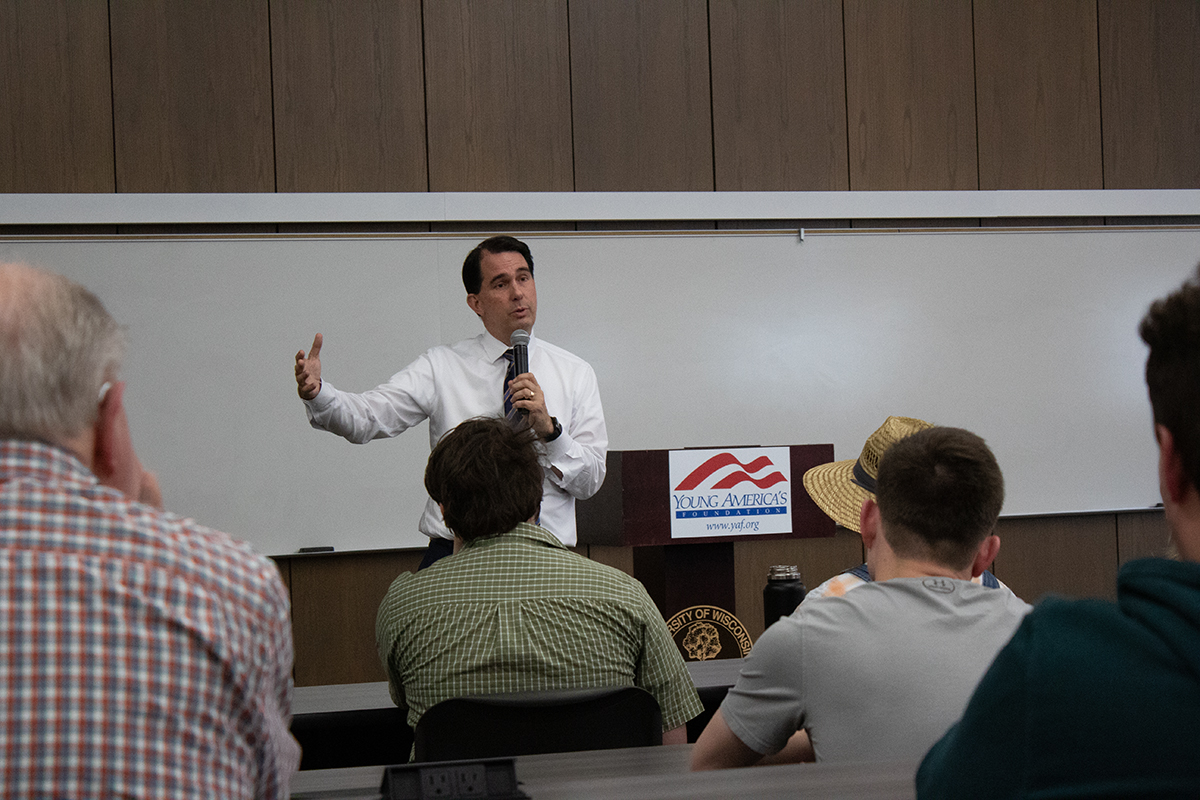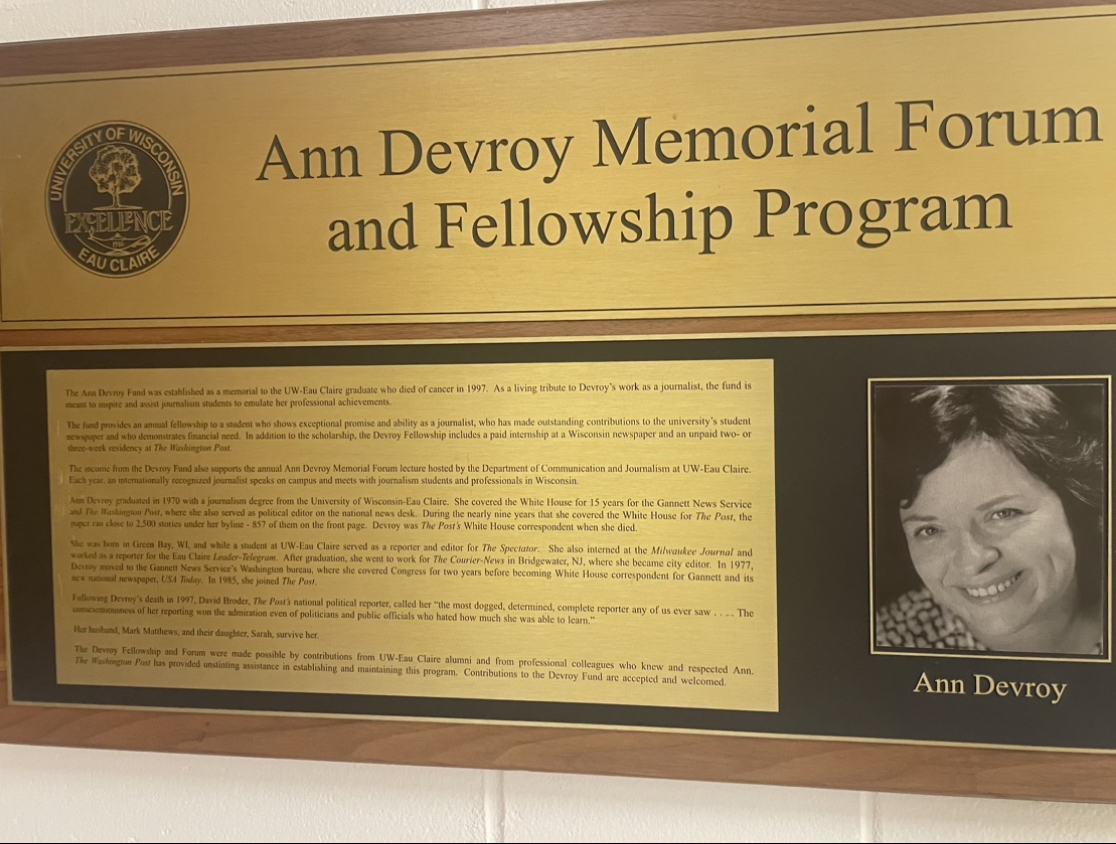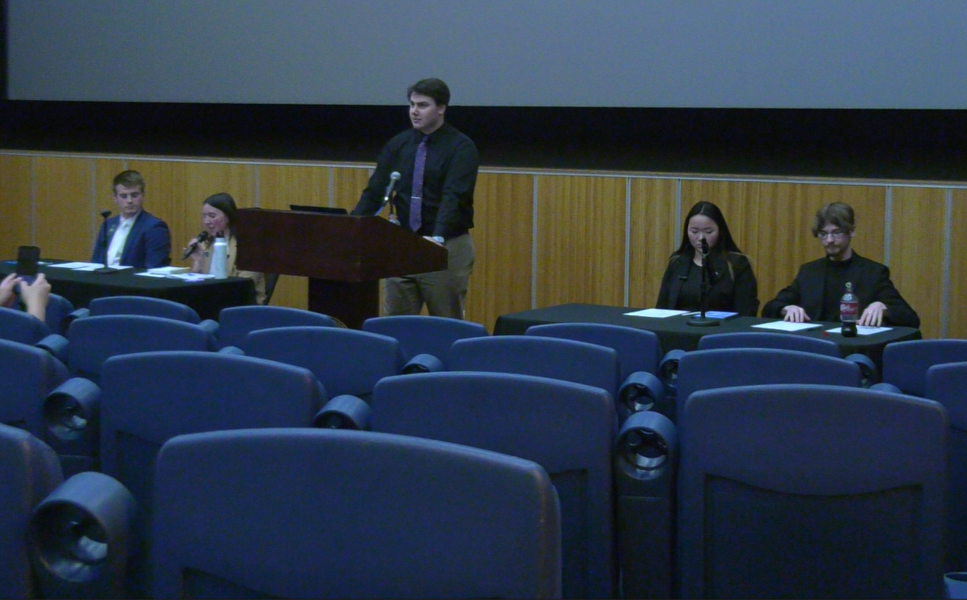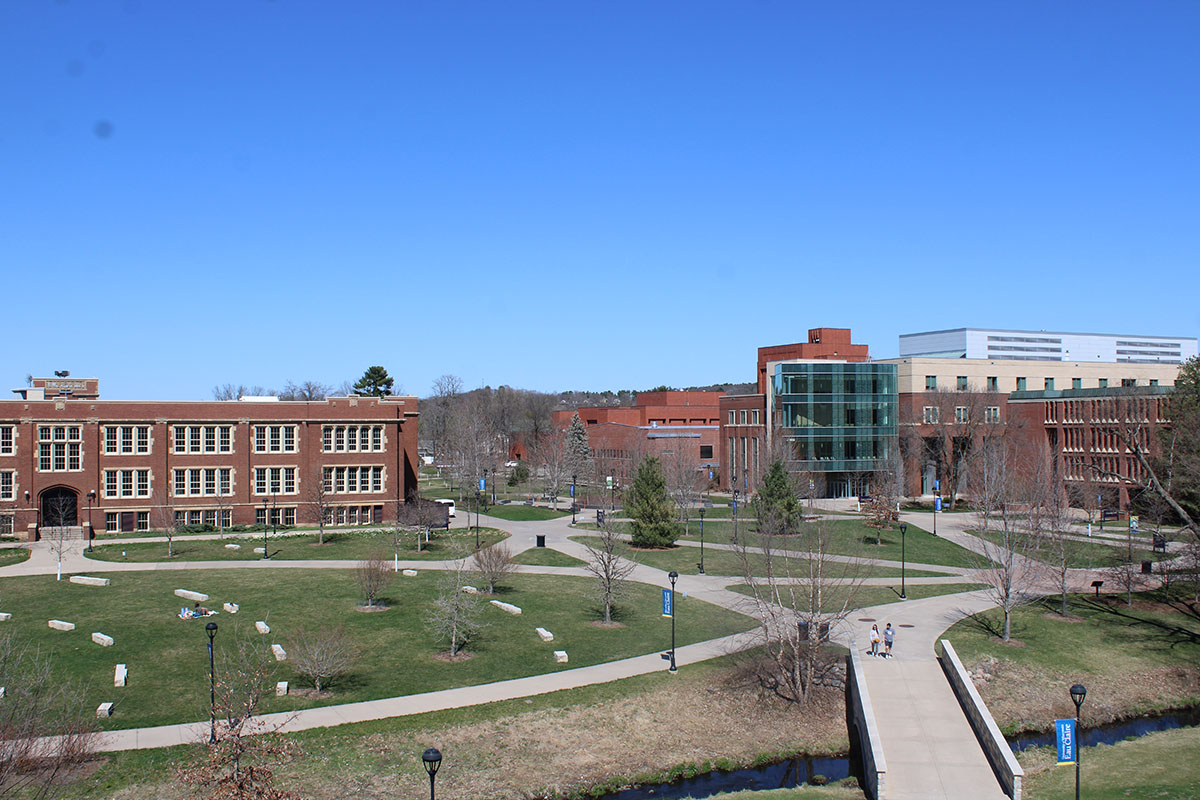On Monday night, Special Assistant to the Chancellor Mike Rindo and Director of Facilities Management Terry Classen spoke to Student Senate in opposition of a lane change on the footbridge.
“By reversing the lanes you actually increase the potential conflict points between pedestrians and bicycles,” Rindo said. “You go from one on (the south side) of the footbridge to three on the (north side) of the footbridge.”
The new points of conflict would occur because pedestrians would have to cross the bike path when accessing the stairs and when entering and exiting Haas Fine Arts Center.
Rindo and Classen were responding to a resolution that was proposed by the Student Services Commission and passed by Student Senate to look into the crossing of traffic lanes at the entrance to the footbridge nearest to Schofield Hall.
However, Rindo said that the university is willing to work with Student Senate on changing the bridge as they do feel that it is not perfect at the moment.
Ultimately, Rindo said the decision whether or not to do anything with the bridge is up to the university, not Student Senate.
Chrissy Duszynski, director of the Student Services Commission, said that students’ complaints about the intersection were the reason behind the resolution.
She feels that what Rindo said has merit, but that the solution proposed by her commission would be an improvement.
“In our minds we don’t feel that a change would make more points (of conflict),” she said. “We feel that it would take one away and add it somewhere else; we feel there would be less conflict at the main point of contention at the Schofield end of the footbridge.”
Duszynski added that more people use the south entrance than the north staircase, so moving the conflict to that end wouldn’t be as big of a problem.
A test has already been conducted to see how many pedestrians, vehicles and bikes use the bridge.
From 7 a.m. to 6 p.m. on Nov. 10, 7,480 pedestrians, 1,386 bicycles and 33 vehicles were counted crossing the bridge, according to a study the commission did. Duszynski said the numbers show that it is primarily students who use the bridge, so students should have some say in how they want it aligned.
One such student who crosses the bridge is freshman Sam Hoppe, who said he sees the issues that the Schofield side produces.
“It gets busy during a lot of the main class switches … you notice a lot of jumbling-up right here,” said Hoppe, as he pointed to the intersection.
He said he would not be opposed to the idea of a lane switch because he feels that more people use the entrance on the south side of the bridge than the stairs on the north side.
On the other hand, senior Jared Hause said that the conflict on the bridge is not a problem, but he is not necessarily opposed to switching the lanes. He said that either way, it comes down to personal responsibility.
“If you understand the proper techniques of crossing lanes, you’d look over your shoulder and if you see a bike, you stop and let them go through and cross over to the other lane.”
Duszynski said from here the commission will try to collect evidence from the students about collisions and to gather the reactions of students to a lane change. She and her commission are not yet done with pursuing this change.
“It’s my job as an elected representative of this university to fight for what the students want and at this point if the students show me that this is a major issue to them … I’m going to keep fighting,” she said.

